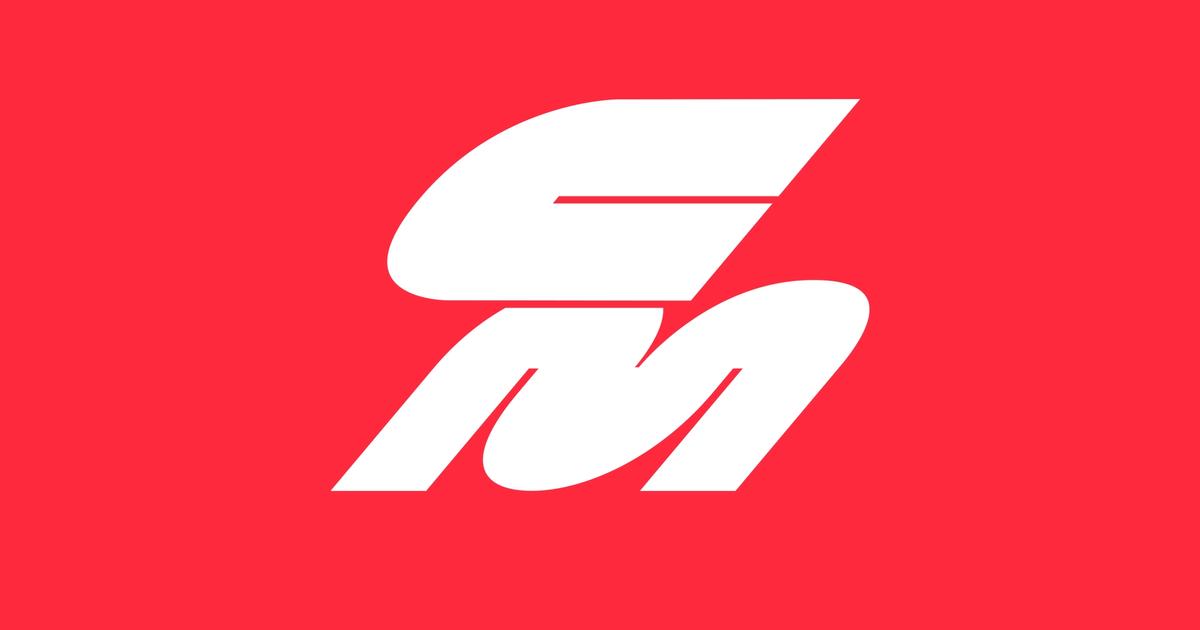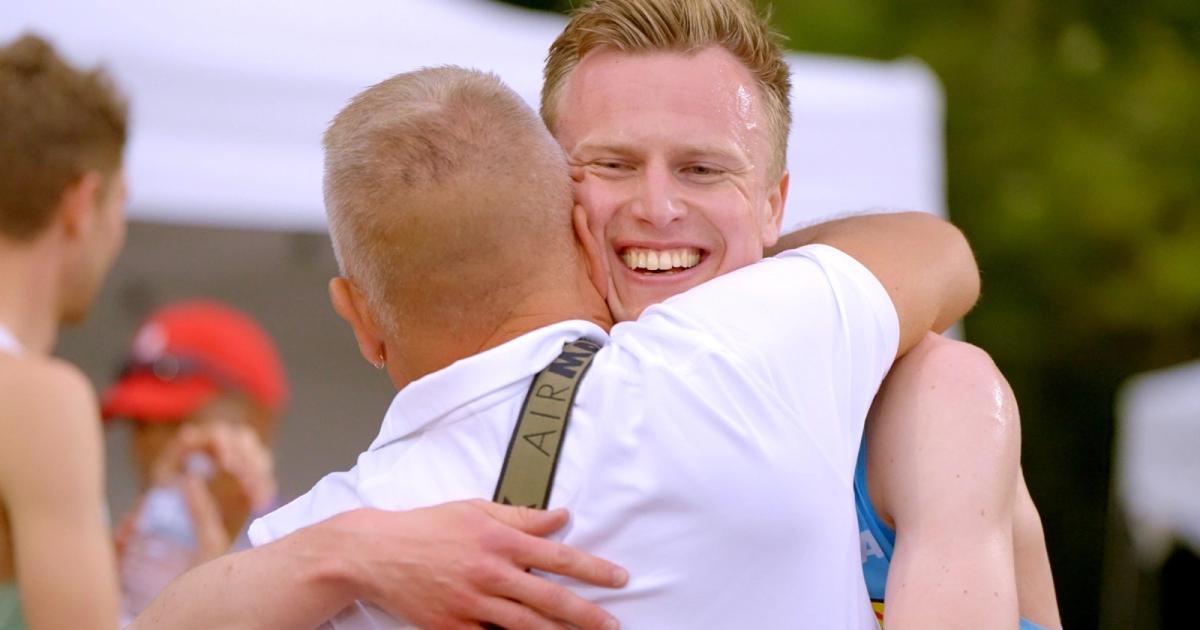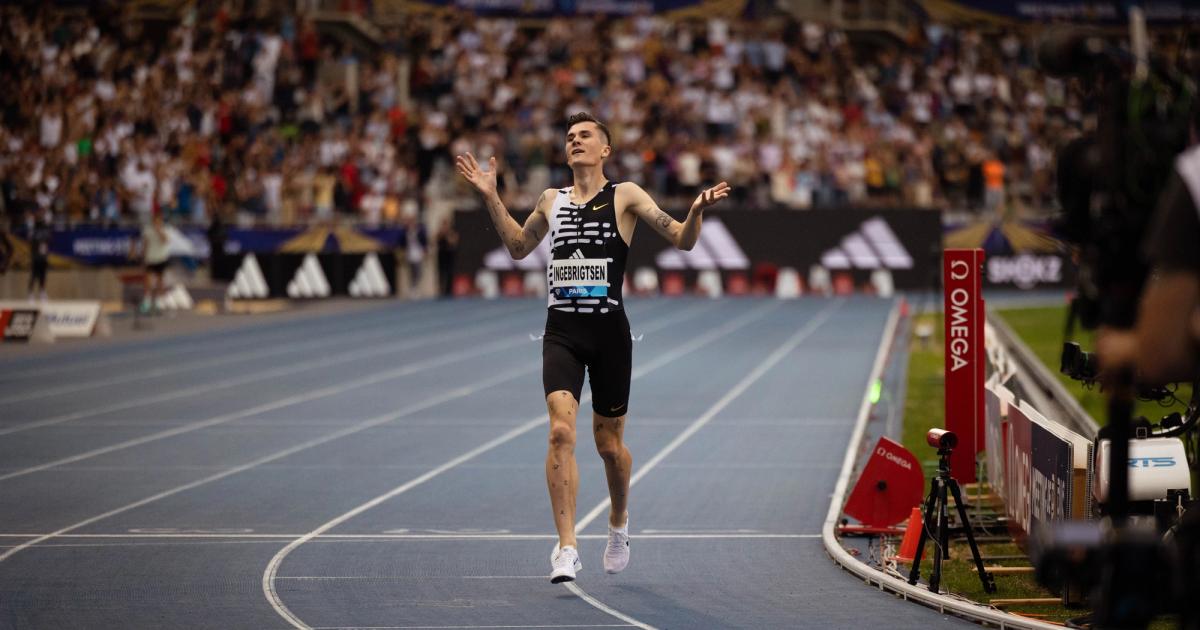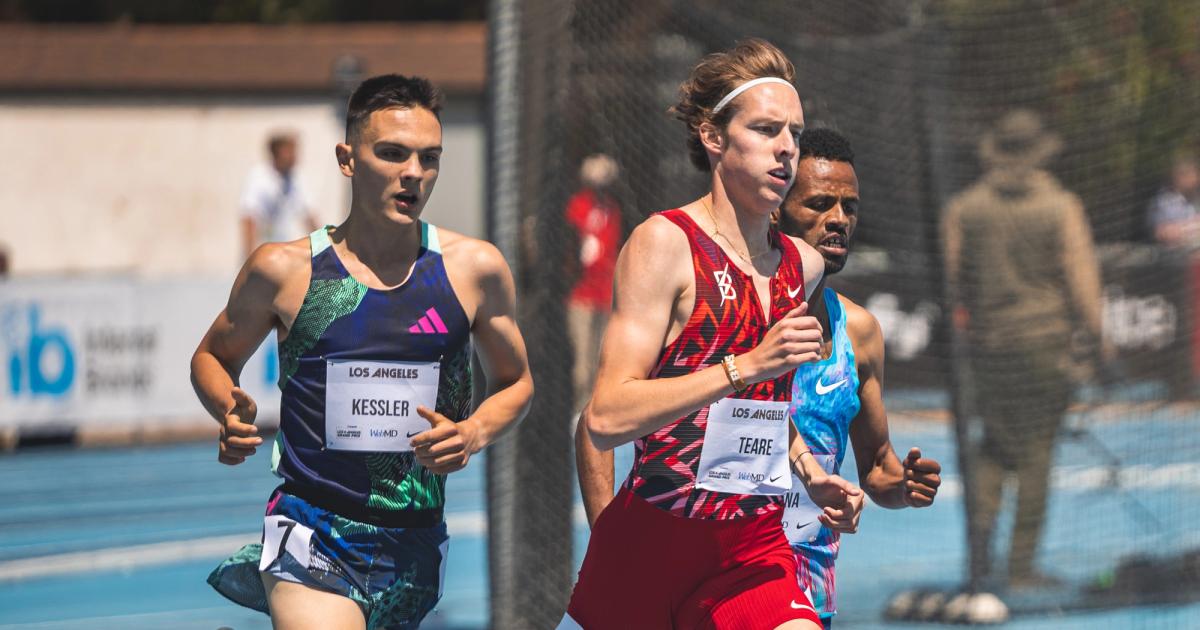By Citius Mag Staff
June 11, 2023
Just one day after Jakob Ingebrigtsen broke the two-mile world record, his father Gjert Ingebrigtsen was in attendance at the FAST5000 meet, which also served as the latest stop in the On Track Nights series. He was there coaching 24-year-old Norweigian middle distance runner Narve Gilje Nordås, who won the men’s 1500m in a personal best of 3:32.39. He is the second-fastest Norwegian of the year at 1500m and previously represented Norway at the Tokyo Olympics in the 5000m.
Our very own David McCarthy had a moment to stop and chat with Gjert about his training philosophy, which has been adopted in many places following the success of his sons in recent years. The conversation has been transcribed and edited lightly for clarity.
CITIUS MAG: Gjert, great to meet you. This is my first time ever seeing you in person. It was always on YouTube. So thanks very much for having a few words with me. Narve Gilje Nordås with an unbelievable performance tonight in 3:32. And you just told me off-camera, he came down from the half marathon?
Gjert Ingebrigtsen: That was his primary aim a few years ago. And then 10K and then 5k and I convinced him, ‘You are perfect for 1500m and the training we do is also perfect for 1500m. I think you should try it. I think you can do well.’ And then, he said, ‘Oh, okay, I'll try it.’ And he did one attempt last year and was wowed. But still, it was the 5K that was his most important event. So this year, he will go all-in for 1500m. And you can see by the results today, that’s where he should be.
CITIUS MAG: What did you see in him that you thought he could be such a good 1500m runner?
Gjert Ingebrigtsen: I’ve been coaching him since he was 15. But having my own boys, it was difficult to put enough effort into his training and his focus was also on doing good in the university. Now he’s still in the university, but also doing good on the track. So he can do both.
CITIUS MAG: So it's clear the Ingebrigtsen model doesn't only just work for Ingebrigtsens.
Gjert Ingebrigtsen: No, the model works for others. Just by being here and watching people do warm up and cool down, I see that many have adopted our way of doing things and I'm proud of that.
CITIUS MAG: We talk about the threshold and controlled training like measuring the lactate, which keeps you under control. I suppose working on that aerobic system, it's a zone that feels comfortable and it's easy to overdo it. But yet at the same time too, you need to have that turnover for the track. How do you manage to mold both of them together and how does the athlete kind of feel that they can be confident knowing that this will pay off?
Gjert Ingebrigtsen: And that's the difficult thing because you have to put all your trust in the coach. So we don't do any tests to gain confidence. We do the training and the training is volume-based and threshold-based. We are made a key composition that there's also some track work, but not much. So it's always a little uncertainty when you do your first track meet. You have to rely on the system for a long, long time. It's no quick fix. You have to adapt to the system. It may take one or two or three or four, maybe five years. But when you come out on the other side, having done all the work you will guarantee success.
CITIUS MAG: Over the winter months and the majority of the year, you're building that aerobic system. Obviously, then at some point in the year, you've got to hit those track workouts –
Gjert Ingebrigtsen: Races.
CITIUS MAG: So did he come in this evening with very little preparation in terms of on-the-track work?
Gjert Ingebrigtsen: Yeah, we have done one race every week for four weeks. The first race was in Karlsruhe on the 20th of May (3:35.91 PB) and the next race was in Oordegem (3:34.70 PB) and the third race was in Bergen (7:43.94 for 3000m) last week. This is the fourth and will hopefully it will do Bilset as the fifth. And then during those races, you gradually build. He has improved for every race and that's the way we do it. We train at a decent volume and it goes through the spring months doing track sessions on track, in competition.
CITIUS MAG: The summer season, in terms of the summer months, is quite short. So the majority of the year is not track season. Are there any points in the year that you are touching off that when it's not track season?
Gjert Ingebrigtsen: No, we do some indoor races in January and February just to say, ‘Okay, I'm where I'm supposed to be.’ Then, we go up again.
CITIUS MAG: Do you feel for that threshold model that it is important to be racing? Is it like during indoors to kind of prepare you more for outdoors and that shock of the system?
Gjert Ingebrigtsen: Like you see Jakob is always doing good races. That's because he has a lot of training based in the system and that's what Narve will also do. You have a good volume, a good base and then you will never do bad races. You can do some races that are not top races but never any bad ones – always high level, all year. You can go directly from training and do a decent race because you have this base and stamina. You will always come out of that system with good stamina. And that's from 15 and up, it’s stamina and nothing else.
CITIUS MAG: Do you think there's an age time for these things? Jakob has been doing this from such a young age in this model. So he almost has a head start on people who might be starting it later in life. Is it possible to get to that level, if you haven't done it in your teenage years?
Gjert Ingebrigtsen: If you have done something to create that base. Never mind what you did if you cycled, if you run, or if you play football – whatever you do to start early with that kind of training to build hard and then long. That’s the engine. You have to train those things from an early age when you are growing. Because when you are finished going, you can’t build anymore physically. You can train what you have. But if you do an early start, you will grow your lungs. Your heart will grow along with your body. There will be natural stamina.
CITIUS MAG: I suppose from younger athletes, we always get caught up in the next race or the next season. I suppose it's so important to have that long-term vision of development.
Gjert Ingebrigtsen: Nevermind what you do as long as you do some activities to build stamina. So if you play, never mind what you do but do something. Don't sit in front of a computer. Don’t sit in front of the television. Just get out and do things something.

Citius Mag Staff




